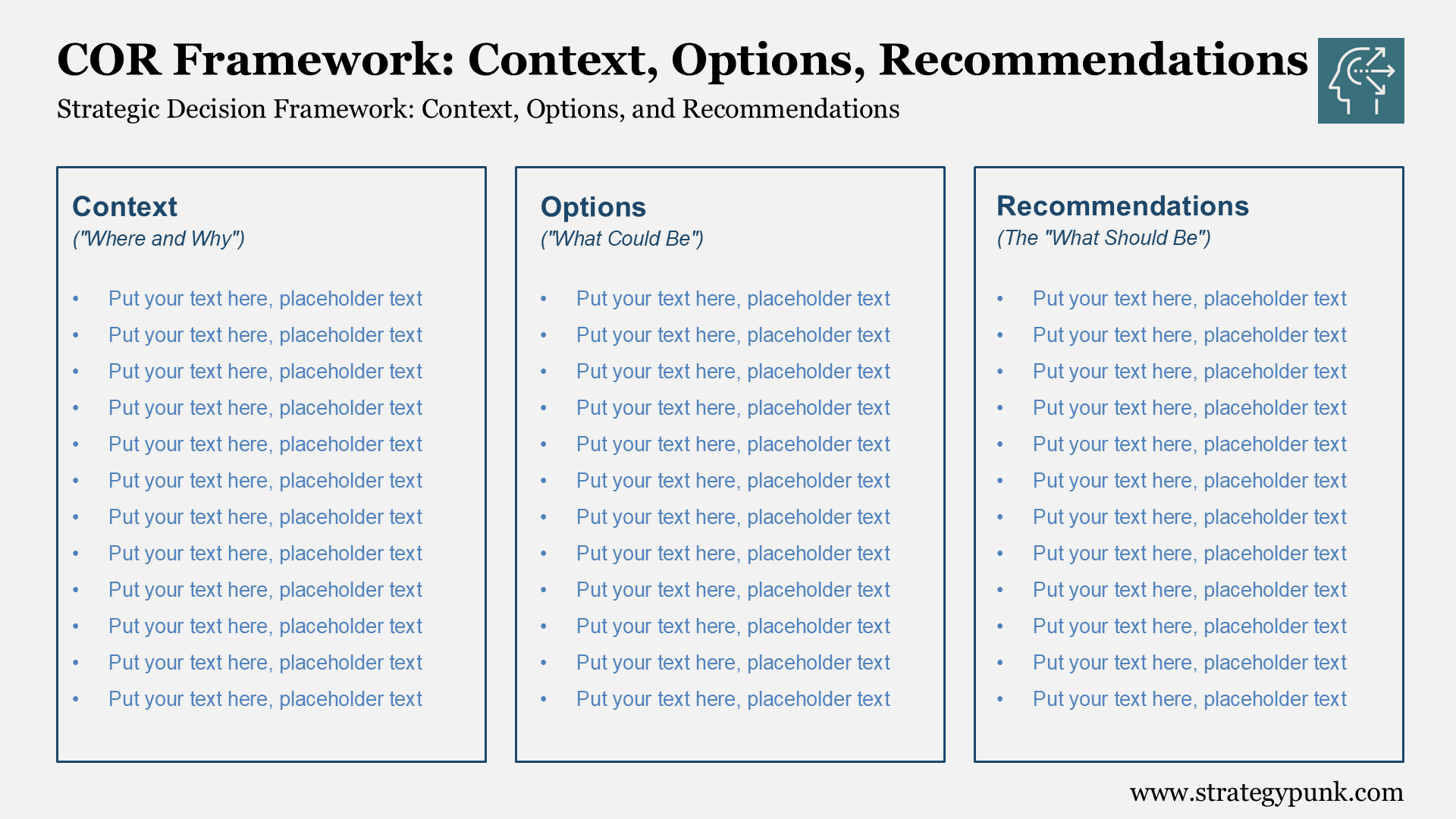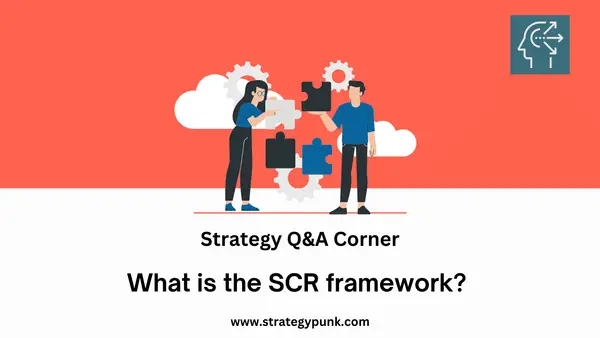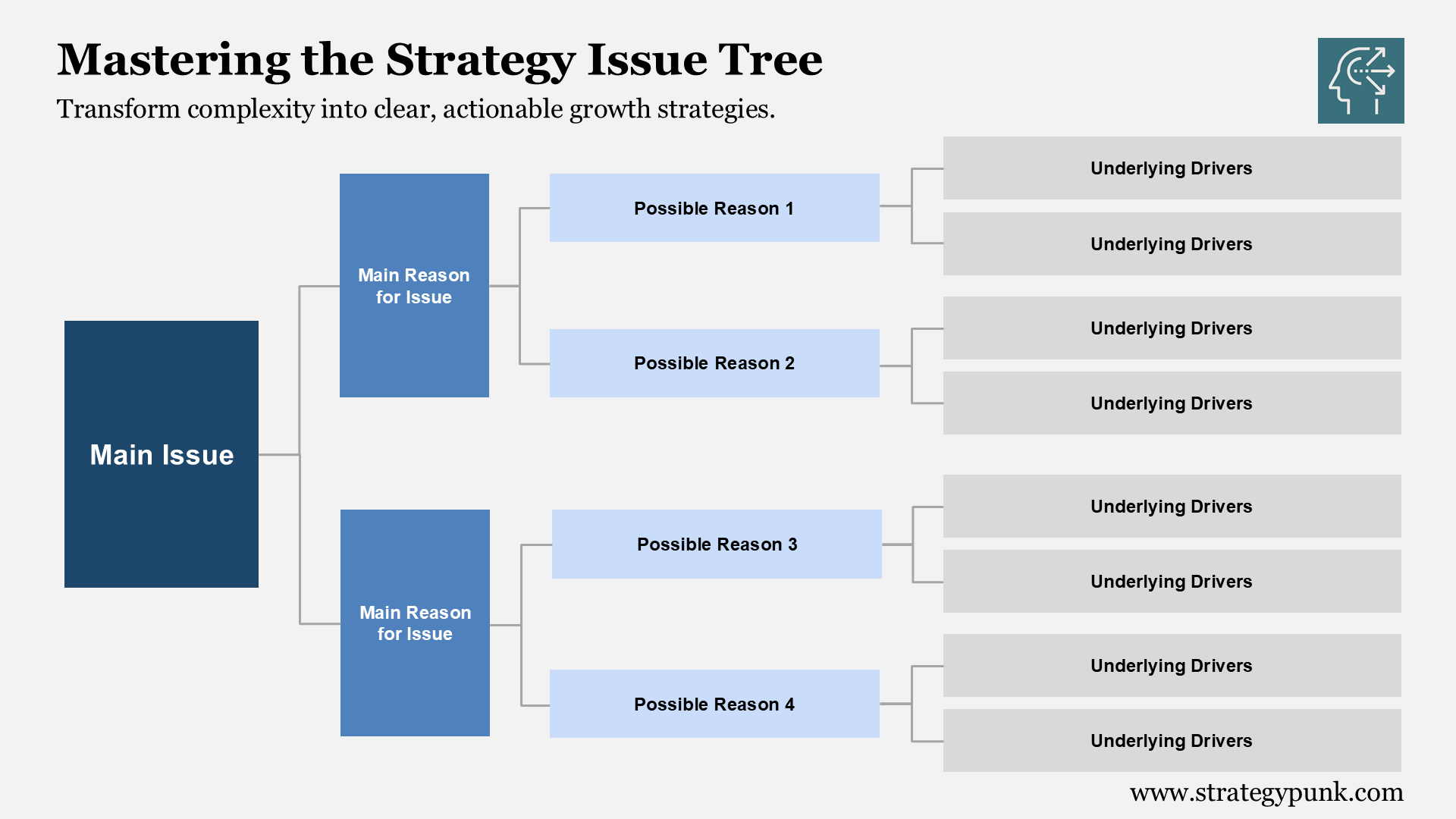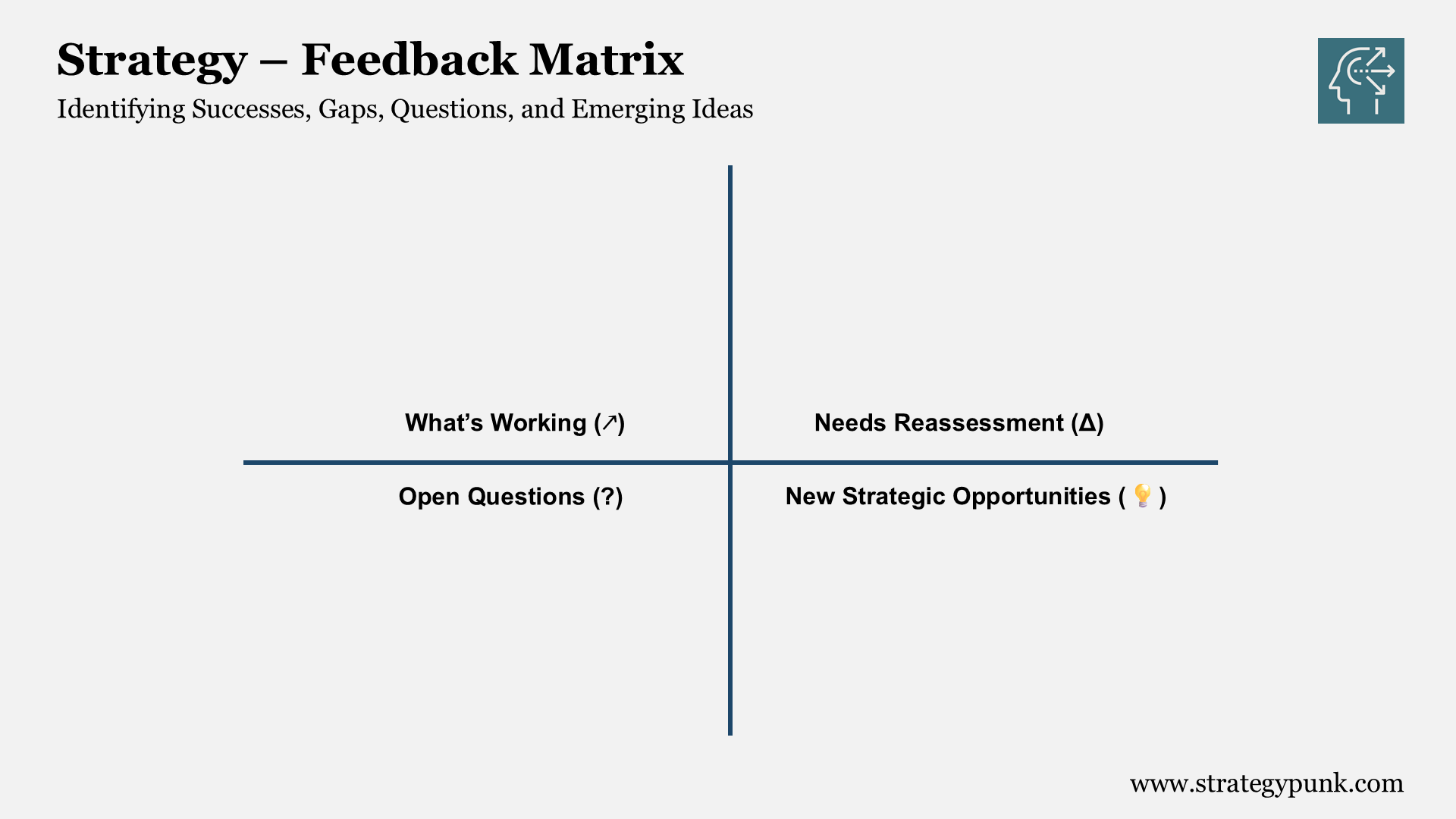The 5 Pillars of Strategy Execution: Strategy, Goals, Projects, Metrics, People (Plus Template)
Uncover the secret to effective strategy execution with our guide on the five pillars - Strategy, goals, projects, metrics, and people. Download our free template now.
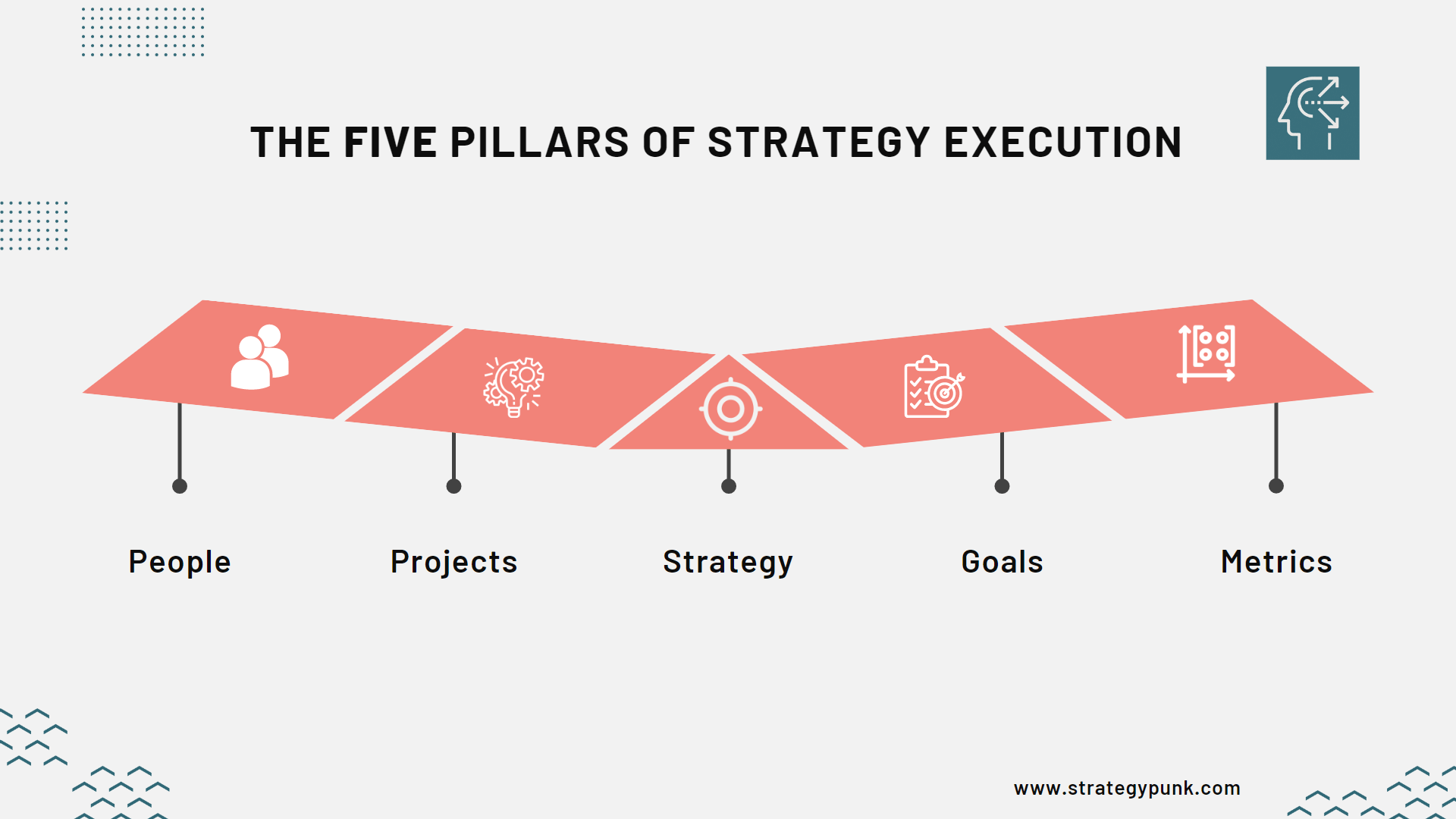
Introduction
Having a well-defined strategy is only half the battle when achieving business success. The other half is executing that Strategy effectively. Unfortunately, many organizations struggle with strategy execution, leading to missed goals, wasted resources, and lost opportunities. To help address this challenge, experts have identified five key pillars of strategy execution:
- Strategy,
- goals,
- projects,
- metrics, and
- people.
One of the most critical aspects of strategy execution is clearly understanding your overall Strategy. This means identifying your organization's long-term goals and the steps you need to take to achieve them. From there, you can break down your Strategy into smaller, more manageable goals that can be tackled individually. By clearly focusing on your Strategy, you can ensure that everyone in your organization is working towards the same goals.
Another critical aspect of strategy execution is a solid plan for achieving your goals. This means identifying the specific projects and initiatives that will help you move closer to your objectives and the metrics you will use to measure your progress. By breaking your Strategy down into smaller projects and tracking your progress along the way, you can stay on track and adjust as needed.
Key Takeaways
- Strategy execution is critical for achieving business success.
- The five pillars of strategy execution are strategy, goals, projects, metrics, and people.
- You can improve your chances of success by clearly focusing on your Strategy, breaking it down into manageable goals, and tracking your progress.
Understanding Strategy Execution
A well-crafted strategic plan and flawless execution are essential to business success. The approach to strategy execution can be broken down into five pillars: strategy, Goals, Projects, Metrics, and People.
The first pillar, Strategy, is the foundation of your execution plan. Please understand your strategic plan and how it aligns with your business goals. This clarity makes everyone in your organization understand your direction and what needs to be done to get there.
Once you clearly understand your Strategy, you need to set Goals that align with it. These goals should be specific, measurable, achievable, relevant, and time-bound (SMART). When you set SMART goals, you give your team a clear target to aim for and a way to measure their progress toward achieving it.
The third pillar is Projects. It would be best to take these specific initiatives to achieve your goals. Projects should be broken down into smaller, more manageable tasks that can be assigned to specific team members. This ensures that everyone knows what they need to do and when they need to do it.
The fourth pillar is Metrics. You use these key performance indicators (KPIs) to measure progress towards your goals. Metrics should be tracked regularly, and any deviations from the plan should be addressed promptly. This ensures that you can make course corrections before it's too late.
Finally, the fifth pillar is People. It would help if you executed your plan successfully. This means having a solid leadership team that can guide your organization toward achieving your goals. It also means having an engaged, motivated, and committed team to the organization's success.
In conclusion, understanding the five pillars of strategy execution is critical to your business's success. By focusing on Strategy, Goals, Projects, Metrics, and People, you can ensure that your organization is aligned and working towards achieving your strategic plan. With the right approach and leadership, you can execute your plan flawlessly and achieve your business goals.
The Five Pillars of Strategy Execution
Successful strategy execution is critical for any organization to achieve its goals. The five pillars of strategy execution—strategy, goals, projects, metrics, and people—provide a framework for effective implementation.
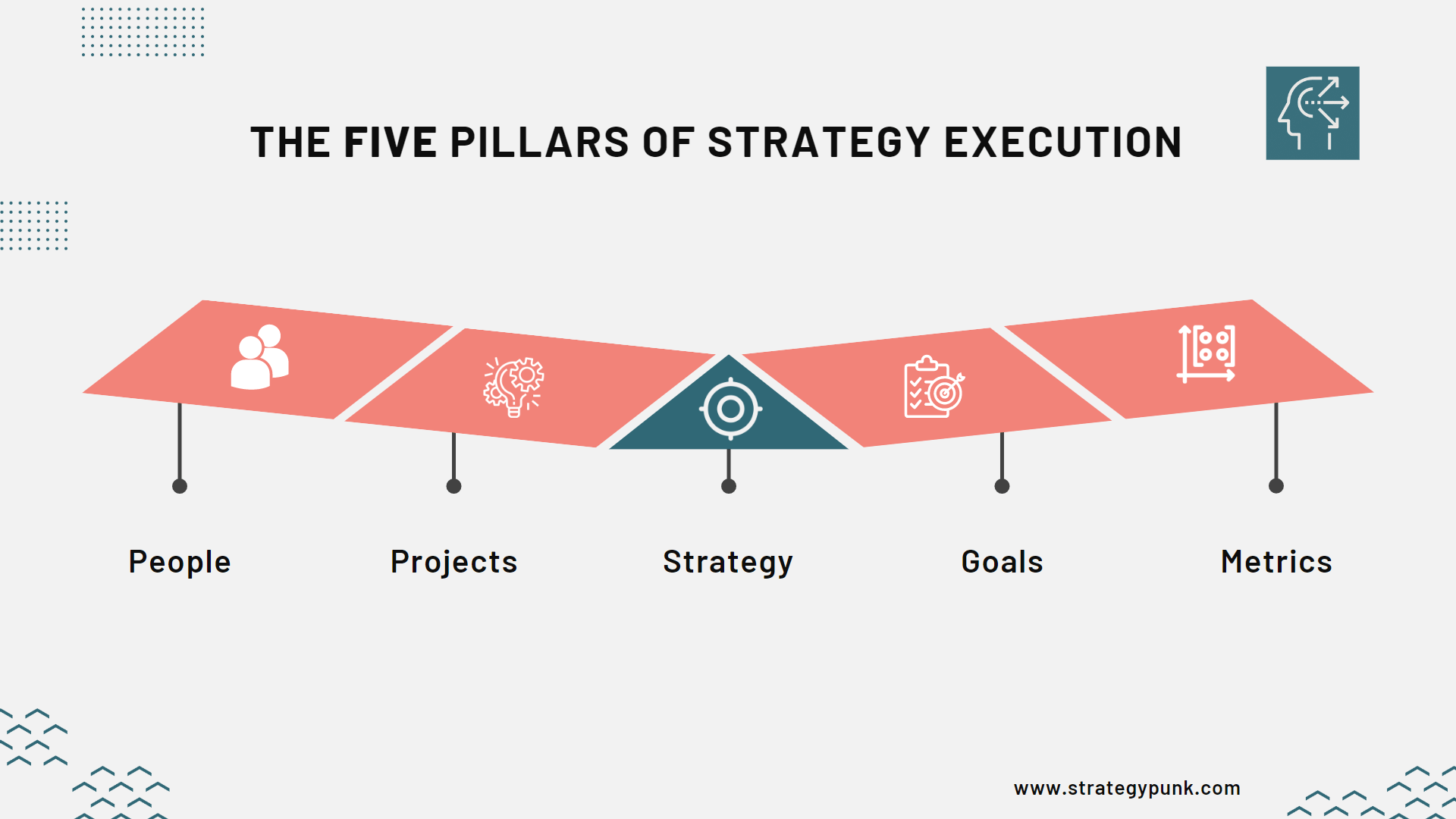
Strategy
Your organization's strategy should be based on its core values, vision, and mission, including a clear mission and choices.
By defining these elements, you can ensure everyone in your organization is aligned and working towards the same goals.
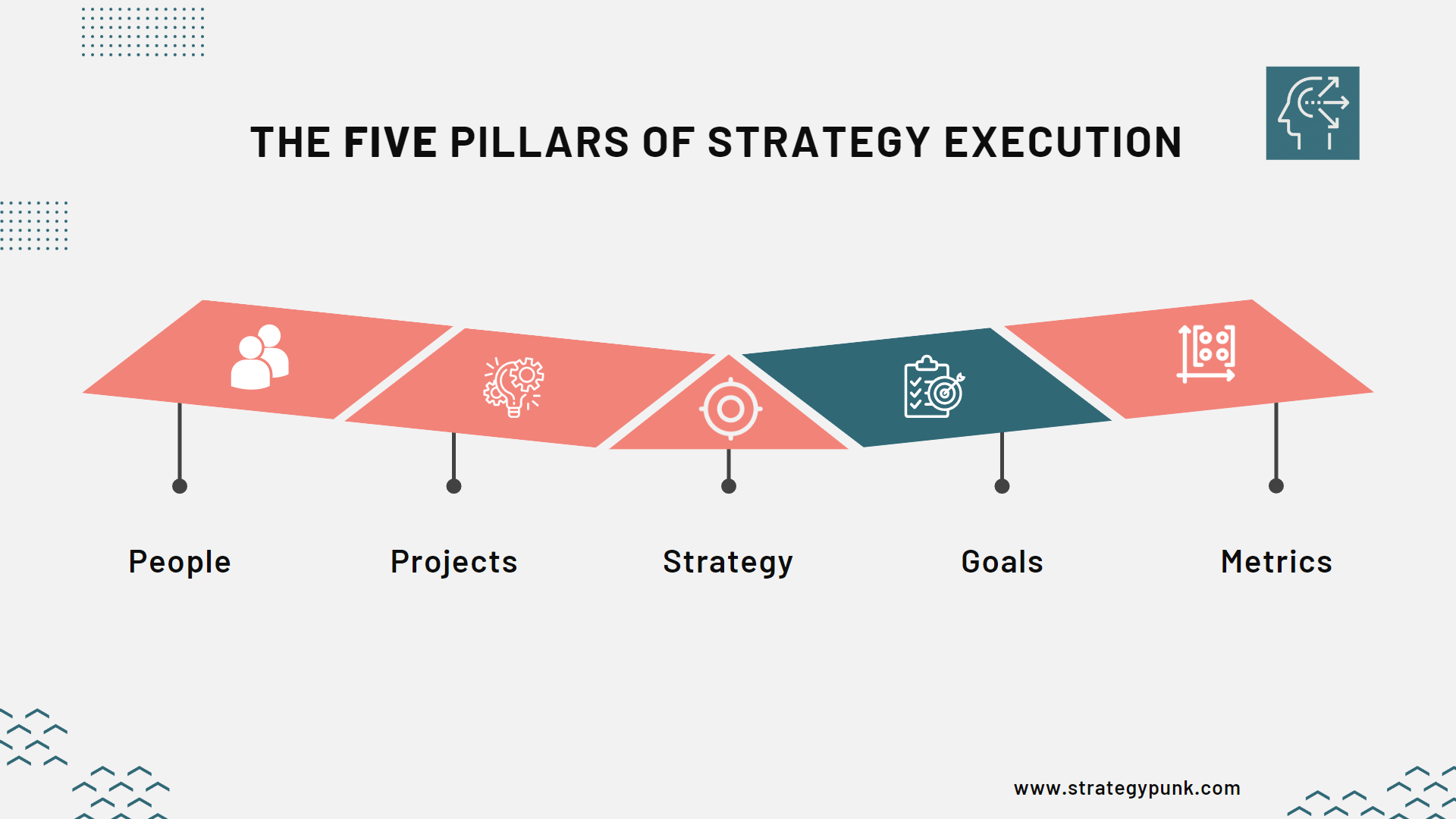
Goals
Setting clear and measurable goals is essential for effective strategy execution. One-year goals, 90-day OKRs, and two-week sprints can help break larger goals into manageable tasks.
Setting clear goals ensures everyone in your organization works towards the same objectives.
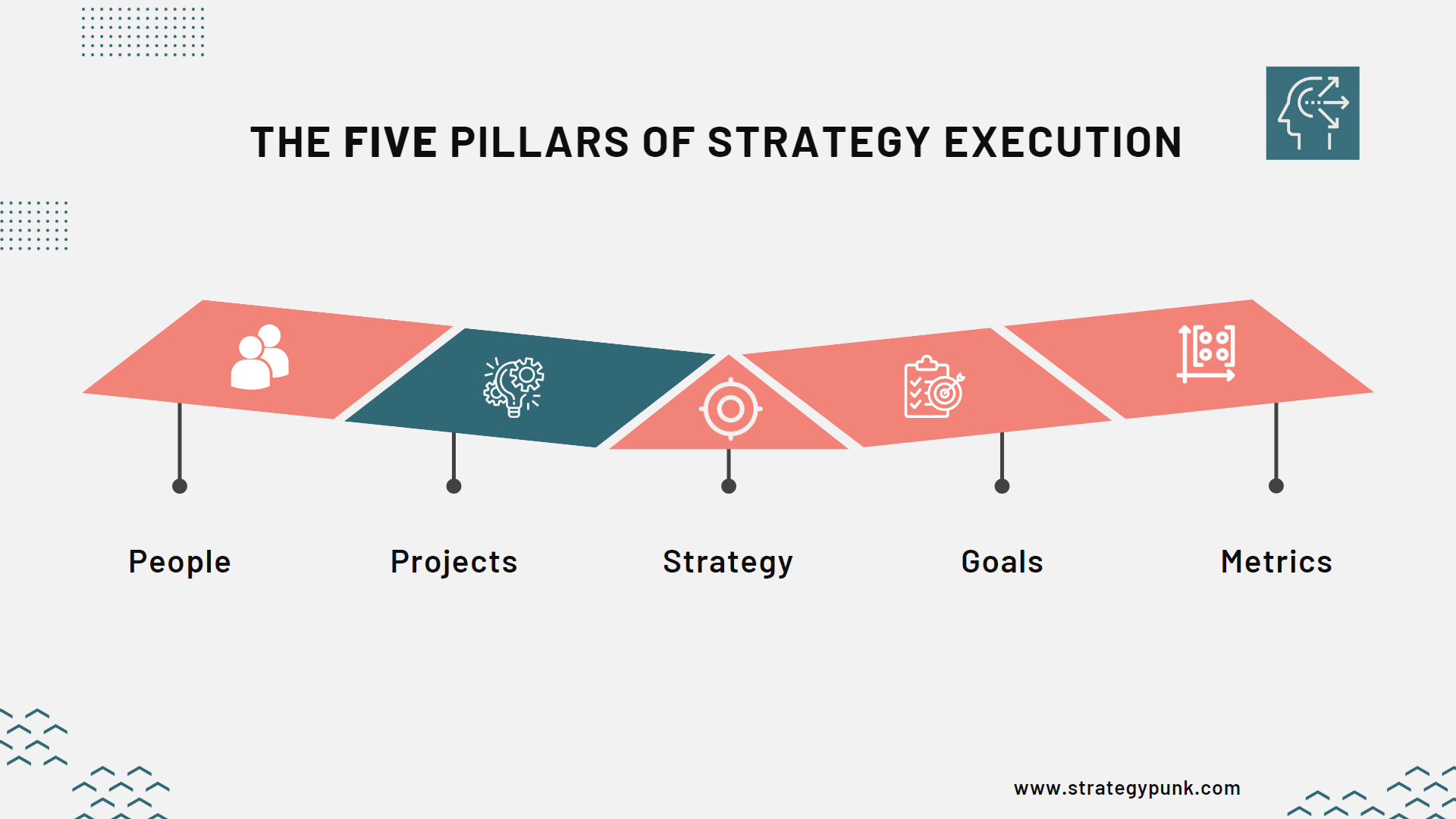
Projects
Projects are the building blocks of strategy execution. They should be aligned with your organization's Strategy and goals.
Make a plan, execute your plan, manage stakeholders, control risk, resources, and scope, deliver, document, celebrate, and close. By following these steps, you can ensure that your projects are executed effectively and efficiently.
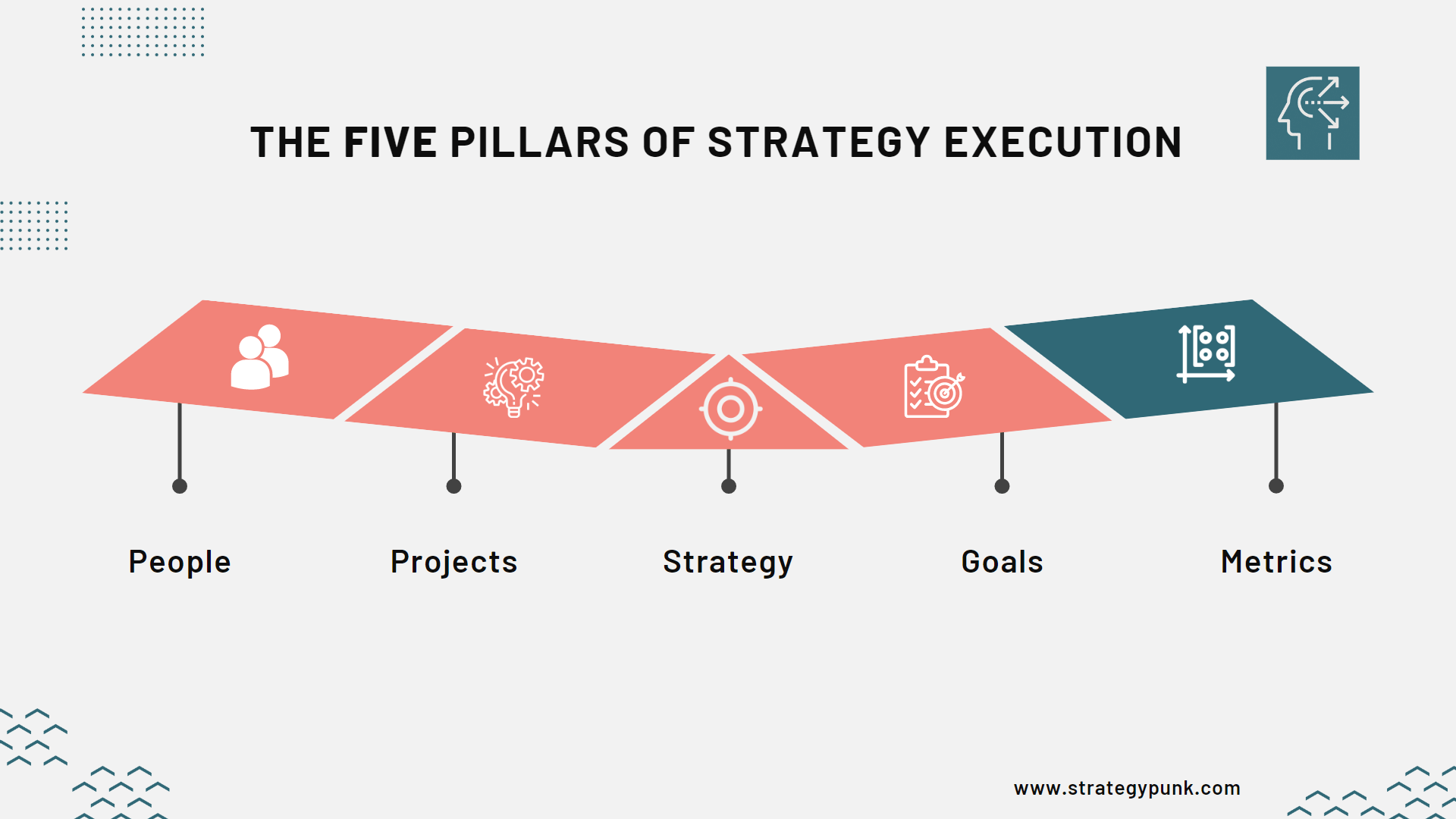
Metrics
Measuring progress is essential for effective strategy execution. Key performance indicators (KPIs), key results, project progress, and meeting cadence can help you track progress and adjust as needed.
You can ensure your organization is on track to achieve its goals by measuring progress.
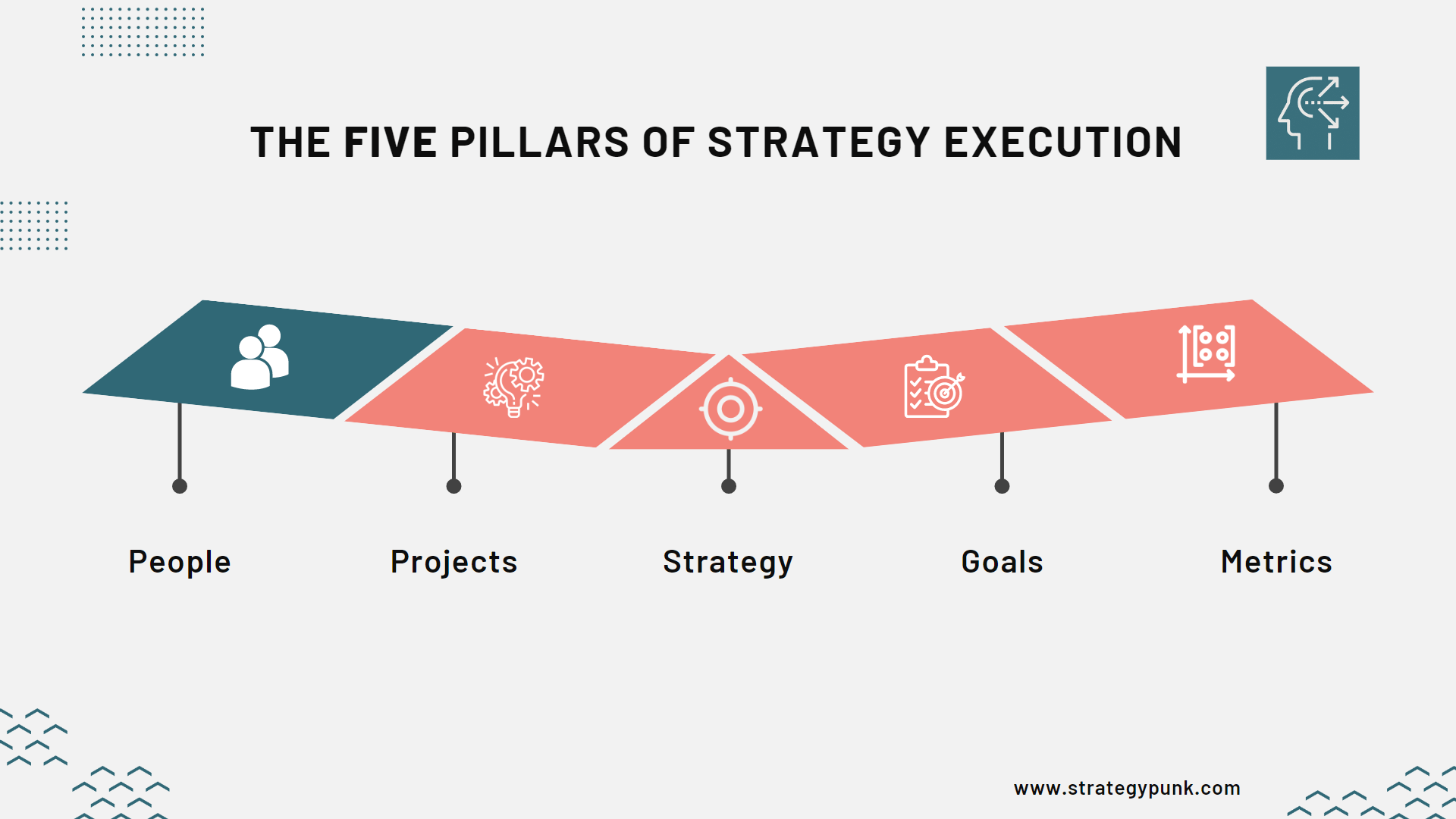
People
Your organization's culture, design, expectations, feedback, support, incentives, and recognition are critical for effective strategy execution.
By creating a culture of accountability and providing the necessary support and motivation, you can ensure that everyone in your organization is working towards the same goals.
In conclusion, the five pillars of strategy execution provide a framework for effective implementation. By focusing on Strategy, goals, projects, metrics, and people, you can ensure that your organization is aligned and working towards the same objectives.
Challenges in Strategy Execution
Executing a strategy is always a challenging task. Even with a well-thought-out plan, several challenges can hinder your progress. Here are a few common challenges that you may encounter during your strategy execution journey:
Slow Strategy Execution
One of the most significant challenges in executing a strategy is the slow pace of execution. While ensuring the Strategy is well-planned, it's equally important to ensure timely execution. Slow execution can lead to missed opportunities and significantly impact the strategy's success.
Insufficient Visibility and Control
With proper visibility and control, tracking progress and making necessary adjustments is easier. A clear picture of what's happening at all levels of the organization would help ensure that everyone is aligned and working towards the same goals.
Employee Change Fatigue
Change is hard, and constant changes can quickly exhaust employees. It's crucial to balance the need for change with stability and ensure that employees are adequately trained and supported throughout the process.
Resourcing Challenges
Lack of resources, whether financial, human, or technological, can significantly impact the execution of your Strategy. I need to ensure you have the necessary resources to execute your plan effectively.
Poor Coordination
Poor coordination between departments or teams can lead to confusion, delays, and missed opportunities. A cohesive communication strategy and ensuring everyone is on the same page are essential.
To overcome these challenges, you must ensure that your strategy execution is well-aligned, with vertical and horizontal alignment. A cohesive communication strategy with clear performance measures and metric goals would help. You also need to ensure that your organizational capacity is up to par and that you have the necessary mechanisms to support your strategy execution.
According to a Gartner poll, the top challenge in strategy execution is the strategy-to-execution gap. To help bridge this gap, you must ensure that your strategy creation is based on accurate data and that flawed assumptions are avoided. You must also ensure that leadership buys in and that your reporting process is transparent and efficient.
Companies with good strategy execution, such as Best Buy, have reinvented themselves and have focused on customer experience, employee training, innovation, and return on invested capital.
Conclusion
In conclusion, successful strategy execution requires a clear vision and Strategy, strong leadership, and engagement at all levels of the organization.
Focusing on strategic change, culture, and programs that support your priorities is essential.
By overcoming these challenges and focusing on aligned execution, you can achieve your strategic goals and drive your organization's growth and impact.
Frequently Asked Questions
What are the critical components of a successful strategy execution?
Successful execution involves five key components: strategy, goals, projects, metrics, and people. Strategy defines the direction and scope of the organization, while goals outline specific objectives to achieve it. Projects are initiatives that help achieve goals, and metrics are measurements to track progress. People are the individuals who execute the projects and drive the Strategy forward.
How can an organization effectively execute its Strategy?
To effectively execute its Strategy, an organization must ensure it is clear and well-communicated. It must also align its goals, projects, and metrics with the Strategy and ensure its people are motivated and equipped to execute the tasks. Finally, the organization must regularly review and adjust its strategy execution efforts to remain relevant and practical.
What role do metrics play in strategy execution?
Metrics play a critical role in strategy execution as they provide a way to measure progress and ensure that the organization is on track to achieve its goals. Metrics should be specific, measurable, and aligned with the organization's goals and Strategy. They should also be regularly reviewed and adjusted as necessary.
How can people be aligned with the strategy execution process?
To align people with the strategy execution process, the organization must ensure that its people understand the Strategy and their role in executing it. The organization should provide training and development opportunities to help its people acquire the necessary skills and knowledge. The organization should also recognize and reward its people for contributing to the strategy execution process.
What is the importance of project management in strategy execution?
Project management is critical to strategy execution as it provides a structured approach to executing the organization's initiatives. Project management ensures that projects are completed on time, within budget, and to the required quality standards. It also provides a way to identify and mitigate risks that could impact achieving the organization's goals.
How can an organization measure the success of its strategy execution efforts?
An organization can measure the success of its strategy execution efforts by tracking its progress against its goals and metrics. To remain relevant and practical, the organization should regularly review and adjust its strategy execution efforts. It should also solicit feedback from its people and stakeholders to identify areas for improvement.
Template: The 5 Pillars of Strategy Execution
Uncover the secret to effective strategy execution with our guide on the five pillars - Strategy, goals, projects, metrics, and people. Download our free template now.
Would you be ready to elevate your business success? Harness the power of the five pillars of strategy execution today!
We've created an easy-to-follow guide, The 5 Pillars of Strategy Execution, to help you achieve effective strategy execution.
Download for FREE in a user-friendly PDF format.


